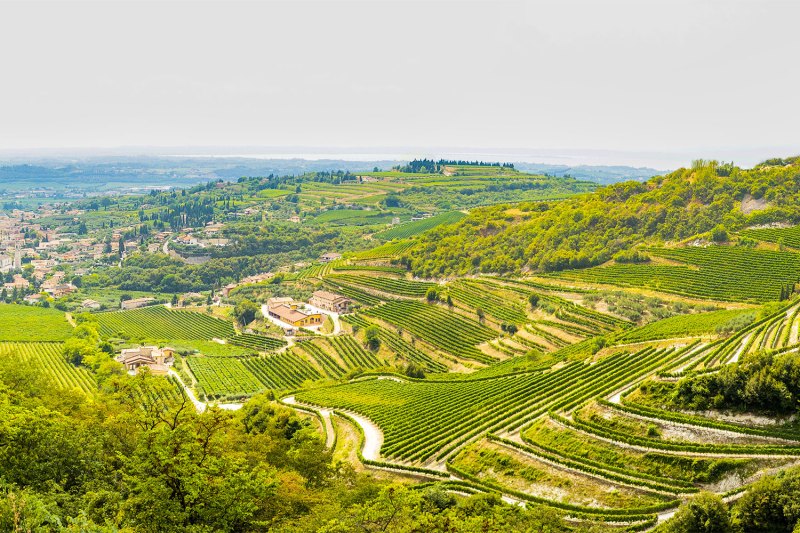
Valpolicella is one of Italy’s most famous winegrowing regions, but most of us stateside know very little about it.
To begin, it resides in the north close to Venice in the Verona region, near Alto Adige. Winemaking goes back thousands of years, all the way to the ancient Greeks. It remains a cornerstone of the region today, based predominantly the approved grape varieties of Corvina Veronese, Rondinella, and Molinara.
Valpolicella’s most famous boozy export is likely amarone, a hefty wine made from grape skins. This stuff comes in hot, often surpassing the 15% ABV mark and showing deep, concentrated fruit tones with very little acid. The fruit tends to get harvested later, when the rains come in, making disease pressure a real issue. Fending off potential faults and flaws is one of the biggest challenges in making amarone.
Strangely enough, Valpolicella is also known for the opposite — a bright and fresh red wine that begs for summer weather. It’s the kind of feathery yet flavorful red you can chill and should accompany you often as you bring fresh produce, seafood, and poultry out to your grill.
Much of this freshness comes from the climate. Neighboring Lake Garda and the Adriatic Sea keep conditions pretty temperate. The “classico” zone resides to the north in the many folds of the Monti Lessini topography, cooler still thanks to winds coming in from the Alps. An estimated 40% of the region’s wine production occurs here.
Some of the freshness is owed to the cellar style, which is somewhat inspired by nouveau (famous for Beaujolais). Fermentations are cool, aging is limited, and the resulting wines are light and fruity on the palate, showing things like sour cherry and pomegranate. Intriguingly, they tend to manage to hold on to some Old World-ness as well, in the form of moderate earth and spice.
In addition to the above grapes, there’s also Barbera, Sangiovese, and Bigolona. More intrepid vintners are looking to bring back native varieties like Oseleta as well, adding another voice to the local terroir conversation. A sweeter style, dubbed recioto, is also quite popular in Valpolicella. The name refers to the ear-like sections at the top of some fruit clusters, which tend to be the richest as they get the most sunshine and produce the most sugar.
While young, another popular Valpolicella style is Ripasso. It emerged in the late 20th Century and involves bringing in some of the pomace (or, fruit pressing remains) or partially-dried grapes from the recioto and amarone styles during maceration. It offers more structure and body without overwhelming the palate. It’s become more and more popular since the 1980s and in 2009, ripasso earned true DOC recognition.
You don’t have to switch over entirely to whites and Roses during the summer stretch and Valpolicella is tasty proof. Here are a few to try:
Tenuta Sant’Antonio “Nanfrè” Valpolicella

As fresh as they come, this wine forgoes oak and dried grapes for a lively, lower-alcohol sipper. The fruit comes from 10-15-year-old vines in the eastern part of Valpolicella, a mix of mostly Corvina and some Rondinella. Crafted and aged in stainless for a relatively brief time, the wine is exuberant and eager to be drunk, especially slightly chilled with a nice grilled chicken salad.
Corte Canella Valpolicella Superiore

Intense but balanced, the work of Corte Canella relies on vines more than a half-century in age. The Valpolicella Superiore is a delicious mix of floral potpourri elements, deep fruit, and backing spice undertones. It demonstrates both the depth and lightness a good Valpolicella can simultaneously deliver.
Damoli “Morarìa” Valpolicella Classico

Dusty and driven by stone fruit, this wine is from a family estate that goes back to the early 17th Century. A blend of Crovina, Corvinone, and Rondinella, it’s an eye-catching red, with an electric hue and enticing red currant and baked cranberry notes. It’ll reward your palate with its vigorous flavor profile and delightful drinkability.


